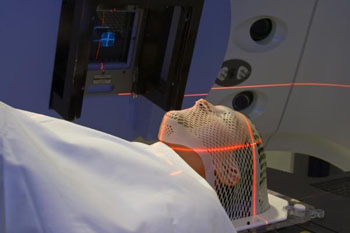Longer Breath-Holds Allow Targeted Radiotherapy in a Single Session
By MedImaging International staff writers
Posted on 24 May 2016
Researchers in the UK have demonstrated that by training breast cancer patients to hold their breath for over five minutes, targeted radiotherapy can be administered in one single dose in a daily session.Posted on 24 May 2016
It takes two minutes to deliver a typical shaped radiation beam that is used to treat cancerous tumors. Currently most radiotherapy treatments are delivered while patients are breathing and their chests are moving, increasing the risk of damage to healthy tissues surrounding the tumor.

Image: Breast cancer patients that can hold their breath over five minutes allow targeted radiotherapy to be administered with just one dose in each daily session (Photo courtesy of the University of Birmingham).
The research was carried out by clinical teams from the University of Birmingham (Birmingham, UK) and the UK National Health Service (NHS) Foundation Trust, and published in the May 2016, issue of the British Journal of Radiology.
The trial included 15 patients all of whom were undergoing radiotherapy. Thirteen of the patients also underwent chemotherapy, and two patients were taking Herceptin. The patients were trained how to maintain a relaxed posture, practice inhaling and exhaling to maximum effect, and naturally raise blood oxygen levels, and reduce blood carbon dioxide levels, using mechanically induced hypocapnia, and pre-oxygenation techniques. The training enabled the patients to hold their breath for 5.3 minutes on average. According to the researchers assisting patients to achieve a single breath-hold could significantly improve long-term survival, and improve the quality of life of patients with breast cancer.
Dr Mike Parkes, from the University of Birmingham, said, “The physiology of breath holding is well understood on the whole, but has been somewhat overlooked in medical research because until now it hadn’t any obvious clinical application. Following on from our preliminary work on healthy subjects, we wanted to see if we could help patients with breast cancer to achieve a breath hold of over two minutes to allow a radiotherapy treatment to be delivered in a single breath-hold. Being able to hit the cancerous tumor accurately is essential to avoid damage to other areas, including the heart muscle. Having a stable chest that we can target in one dose could be invaluable in protecting the surrounding tissue.”
Related Links:
University of Birmingham














